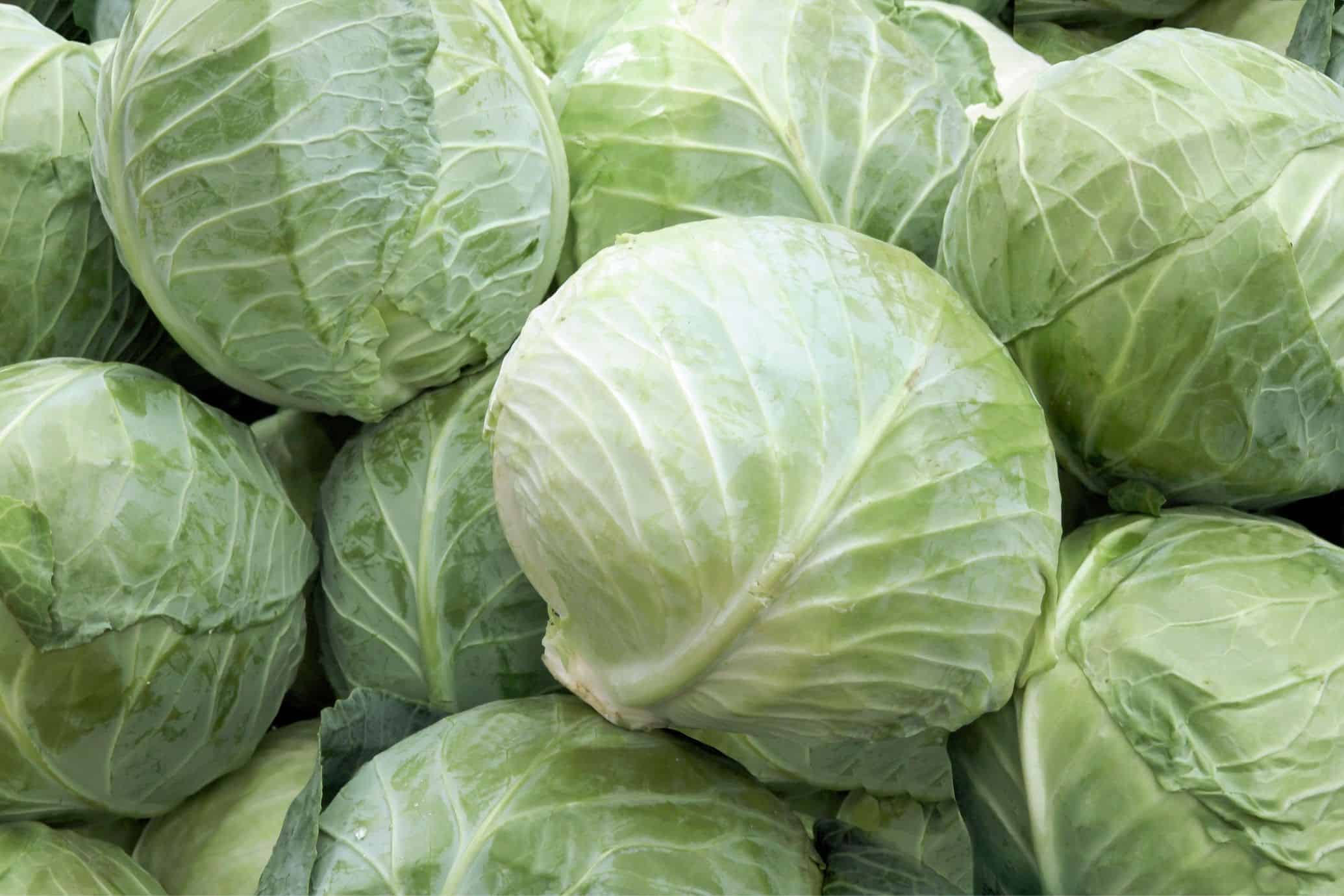

Articles
How To Store A Head Of Cabbage
Modified: February 26, 2024
Learn the proper way to store a head of cabbage to keep it fresh and crisp for longer. Follow our step-by-step guide and never waste cabbage again.
(Many of the links in this article redirect to a specific reviewed product. Your purchase of these products through affiliate links helps to generate commission for Storables.com, at no extra cost. Learn more)
Introduction
When it comes to storing a head of cabbage, proper storage techniques are essential to maintain its freshness and quality. Whether you’ve harvested cabbage from your garden or purchased it from a grocery store, knowing how to store it correctly will ensure that it stays delicious and crisp for as long as possible.
Cabbage is a versatile and nutritious vegetable that can be used in a variety of recipes, from salads and coleslaws to stir-fries and soups. However, improper storage can lead to the cabbage spoiling quickly, resulting in waste and disappointment.
In this article, we will guide you through the process of storing a head of cabbage effectively. You will learn the importance of proper storage, how to choose the right cabbage, and the best ways to prepare and store it. Additionally, we will discuss the recommended storage temperature and conditions, as well as provide some valuable tips for extending the shelf life of cabbage.
By following these guidelines, you can enjoy fresh and crunchy cabbage for an extended period, allowing you to savor its flavor in your favorite dishes.
Key Takeaways:
- Proper storage of cabbage is crucial to maintain its freshness, nutritional value, and prevent spoilage. Choosing high-quality cabbage, proper preparation, and storage conditions are key to enjoying crisp and flavorful cabbage for an extended period.
- Recognizing signs of spoiled cabbage is essential for food safety. Discoloration, wilted leaves, mold, unpleasant odor, sliminess, and increased moisture are indicators of spoilage. Following storage guidelines and practicing food safety habits can help maximize the shelf life of cabbage.
Read more: How To Store Half A Head Of Cabbage
Why Proper Storage is Important
Proper storage of cabbage is crucial to prevent it from spoiling quickly and to maintain its taste, texture, and nutritional value. Here are a few reasons why proper storage is important:
- Preserve Freshness: Cabbage is a perishable vegetable that can lose its freshness if not stored correctly. Improper storage can lead to wilting, browning, and a loss of crispness. By storing cabbage properly, you can extend its shelf life and maintain its freshness for an extended period.
- Retain Nutritional Value: Cabbage is packed with essential nutrients like vitamin C, vitamin K, and fiber. However, prolonged exposure to improper storage conditions can cause it to lose some of its nutritional value. By storing cabbage properly, you can ensure that it retains its nutritional properties and provides you with maximum health benefits.
- Prevent Spoilage: Cabbage is susceptible to spoilage due to mold, bacteria, and other microorganisms. Proper storage techniques help create an environment that inhibits the growth of these harmful agents, reducing the chances of spoilage and foodborne illnesses.
- Save Money: When cabbage spoils prematurely, it often leads to waste, and wasting food means wasting money. By storing cabbage correctly, you can maximize its shelf life, reducing food waste and saving money.
In summary, proper storage is essential to preserve the freshness, taste, and nutritional value of cabbage, as well as to prevent spoilage and save money. With the right storage techniques, you can enjoy crisp, flavorful cabbage in your meals for an extended period.
Choosing the Right Head of Cabbage
When it comes to selecting a head of cabbage for storage, there are a few key factors to consider. Choosing the right cabbage will ensure that you start with a high-quality vegetable that is more likely to stay fresh for a longer period. Here are some tips to help you choose the right head of cabbage:
- Inspect the Appearance: Look for a cabbage head that is firm and dense. It should have vibrant, crisp leaves with no wilting or discoloration. Avoid heads that have brown or black spots, as they indicate spoilage.
- Check the Weight: Pick up the cabbage head and assess its weight. A heavy cabbage usually indicates that it is fresh and full of moisture.
- Examine the Leaves: The outer leaves of the cabbage should be tightly wrapped around the head. Loose or damaged leaves could be a sign of age or improper handling.
- Consider Size: Cabbage heads come in different sizes, so choose one that suits your needs. Larger heads are ideal if you plan to store cabbage for a longer period, while smaller heads are convenient for single-use or quick consumption.
- Avoid Hollow Cabbages: Gently press on the head to check for any hollow or soft spots. A hollow sound or a squishy texture may indicate an overripe or damaged cabbage.
By following these guidelines, you can select a fresh and high-quality cabbage head that is more likely to stay crisp and flavorful during storage. Remember to consider the variety of cabbage and choose one that meets your preferences and recipe requirements.
Preparing the Cabbage for Storage
Before you store a head of cabbage, it’s important to properly prepare it to extend its shelf life. Follow these steps to prepare the cabbage for storage:
- Remove Outer Leaves: Start by peeling off the outer leaves of the cabbage. These leaves are more prone to wilting and may contain dirt or debris.
- Inspect for Damage: Check the remaining leaves for any signs of damage or decay. Remove any leaves that appear discolored, wilted, or have visible spots or mold.
- Clean the Cabbage: Rinse the cabbage head under cool running water to remove any dirt or residue. Gently pat it dry with a clean towel or let it air dry before proceeding.
- Consider Shredding or Slicing: If you plan to use the cabbage gradually, consider shredding or slicing it before storing. This will make it easier to access and use in recipes later on.
- Divide if Necessary: If you have a large head of cabbage and only need a portion of it, consider dividing it into smaller sections. This way, you can store what you don’t need immediately without exposing the entire cabbage to air.
- Place in a Container or Bag: Before storing the cabbage, ensure it is completely dry. Then, place it in a perforated plastic bag, a vegetable storage container, or wrap it loosely in a paper towel or cloth. This allows for airflow while preventing excess moisture buildup.
Following these preparation steps will help ensure that the cabbage stays fresh and retains its quality during storage. Properly preparing the cabbage reduces the risk of mold or bacterial growth and helps maintain its crispness and flavor.
Storing a Whole Head of Cabbage
If you want to store a whole head of cabbage, follow these steps to maintain its freshness and quality:
- Choose an Appropriate Storage Location: Find a cool, dry, and well-ventilated area in your kitchen or pantry to store the cabbage. Avoid storing it near sources of heat or sunlight, as this can accelerate spoilage.
- Avoid Storing with Certain Fruits and Vegetables: Cabbage releases ethylene gas, which can cause some fruits and vegetables to ripen or spoil faster. Keep cabbage away from ethylene-sensitive produce, such as apples, bananas, and avocados, to prevent premature spoilage.
- Store in a Perforated Plastic Bag or Container: To retain moisture and prevent the cabbage from drying out, place it in a perforated plastic bag or a vegetable storage container. The perforations allow for airflow, preventing moisture buildup and reducing the risk of mold.
- Check Regularly for Spoilage: Periodically inspect the cabbage for any signs of spoilage, such as mold, unpleasant odor, or wilting. If you notice any spoilage, remove the affected parts immediately to prevent it from spreading to the rest of the cabbage.
- Keep Separate from Other Foods: To avoid cross-contamination and potential flavor transfer, store the cabbage away from strong-smelling foods like onions or garlic.
By following these guidelines, you can store a whole head of cabbage for an extended period, ensuring that it stays fresh, crisp, and ready to use in your favorite recipes. Remember to check on the cabbage regularly and promptly address any signs of spoilage to prevent it from impacting the rest of the cabbage.
Store a head of cabbage in the crisper drawer of the refrigerator, wrapped in a damp paper towel and placed in a plastic bag. This will help keep it fresh for up to two weeks.
Read more: How To Store A Cabbage
Storing Cut Cabbage
If you have cut cabbage that you want to store, follow these tips to keep it fresh and flavorful:
- Wrap it Properly: After cutting the cabbage, wrap the remaining portion tightly in plastic wrap or place it in airtight food storage containers. This helps prevent moisture loss and keeps the cabbage from drying out.
- Label and Date: If you are storing multiple batches of cut cabbage, make sure to label and date the containers. This will help you keep track of its freshness and use it in the proper order.
- Store in the Refrigerator: Cut cabbage should be stored in the refrigerator to slow down the spoilage process. Make sure the refrigerator is set at a temperature of around 32°F to 40°F (0°C to 4°C) to maintain optimal freshness.
- Use within a Few Days: Cut cabbage has a shorter shelf life compared to a whole head. As a general rule, try to use cut cabbage within 3 to 5 days for the best quality and taste.
- Check for Spoilage: Before using the cut cabbage, inspect it for any signs of spoilage, such as discoloration, sliminess, or an unpleasant odor. If any part of the cabbage appears spoiled, discard it to prevent contamination of the rest.
By following these guidelines, you can store cut cabbage effectively and extend its shelf life. Remember to keep it properly wrapped, store it in the refrigerator, and use it within a few days to enjoy the freshest taste and quality.
Recommended Storage Temperature and Conditions
The storage temperature and conditions play a crucial role in maintaining the freshness and quality of cabbage. Here are the recommended storage temperature and conditions:
- Temperature: Cabbage is best stored at a cool temperature of around 32°F to 40°F (0°C to 4°C). This temperature range helps slow down the rate of spoilage and maintains the crispness and flavor of the cabbage.
- Humidity: The humidity level for storing cabbage should be around 90% to 95%. Higher humidity helps keep the cabbage moist and prevents it from drying out. However, excessive moisture can promote mold growth, so it’s essential to maintain proper ventilation to prevent condensation.
- Ventilation: Proper airflow is important to prevent moisture buildup and reduce the risk of mold. If stored in a plastic bag or container, ensure that it is perforated to allow for adequate ventilation. Avoid sealing the cabbage in airtight bags or containers, as it can lead to excessive moisture and spoilage.
- Away from Ethylene-Producing Foods: As mentioned earlier, cabbage is sensitive to ethylene gas. Keep it away from ethylene-producing fruits and vegetables, such as apples, bananas, and avocados, as they can accelerate the cabbage’s deterioration.
- Separate from Odorous Foods: Cabbage can absorb odors easily. To prevent flavor transfer, store it away from strong-smelling foods like onions, garlic, or pungent spices.
By following these recommended storage temperature and conditions, you can extend the shelf life of cabbage and ensure that it stays fresh, crisp, and tasty for a longer period.
Tips for Extending the Shelf Life of Cabbage
To maximize the shelf life of cabbage and keep it fresh for as long as possible, here are some helpful tips to follow:
- Keep it Whole: Cabbage stays fresh longer when stored as a whole head. Consider cutting and preparing it as needed to minimize exposure to air and moisture.
- Store in the Crisper Drawer: Utilize the crisper drawer in your refrigerator to store cabbage. It provides a slightly higher humidity level and helps maintain optimal freshness.
- Don’t Wash Before Storage: Avoid washing the cabbage before storing as excess moisture can promote spoilage. Rinse it just before use instead.
- Refrigerate Promptly: After purchasing or harvesting cabbage, refrigerate it as soon as possible to maintain its freshness. Delaying refrigeration can lead to faster deterioration.
- Do Not Remove Outer Leaves: The outer leaves of cabbage act as a protective layer. Only remove them when you are ready to use the cabbage.
- Wrap Cut Portions: If you have cut cabbage, wrap the remaining portion tightly in plastic wrap or place it in an airtight container to prevent moisture loss and reduce exposure to air.
- Rotate Stored Cabbage: If you have multiple heads of cabbage, rotate them regularly so that the oldest ones are used first. This helps prevent spoilage and waste.
- Check for Spoilage: Regularly inspect stored cabbage for any signs of spoilage, including discoloration, mold growth, or a foul odor. Remove any spoiled parts immediately to prevent further contamination.
- Consider Freezing: If you have a surplus of cabbage, consider blanching and freezing it for longer-term storage. This method can preserve cabbage for up to 12 months.
By following these tips, you can extend the shelf life of cabbage and ensure that it stays fresh, crisp, and ready to enjoy in your favorite dishes.
Signs of Spoiled Cabbage
Recognizing the signs of spoiled cabbage is important to ensure that you consume fresh and safe produce. Here are some common indicators that cabbage has gone bad:
- Discoloration: If you notice any dark or brown spots on the leaves or if the cabbage has become yellow or black, it is a clear sign of spoilage.
- Wilted Leaves: Fresh cabbage should have crisp and firm leaves. If the leaves appear soft, droopy, or wilted, it indicates that the cabbage has started to deteriorate.
- Mold or Fungal Growth: Visible mold or fungal growth on the cabbage is a strong indication of spoilage. Discard any cabbage that shows signs of mold, as it can cause health issues if consumed.
- Unpleasant Odor: Fresh cabbage should have a mild, slightly sweet aroma. If you detect a foul or rotten smell, it suggests that the cabbage has gone bad and should not be consumed.
- Sliminess: If the cabbage feels slimy or has a slippery texture, it is a sign of decay and bacterial growth. Avoid using cabbage with this texture.
- Increased Moisture: Excessive moisture around the cabbage or inside the storage container can lead to spoilage. If you notice excess water or condensation, it may be an indication that the cabbage is no longer fresh.
Always trust your senses when assessing the quality of cabbage. If you observe any of the above signs, it’s best to discard the spoiled cabbage to avoid potential health risks.
Remember to practice good food safety habits and to store cabbage properly to minimize the chances of spoilage and ensure the longevity of its freshness.
Read more: How To Store Green Cabbage
Conclusion
Properly storing a head of cabbage is essential to maintain its freshness, flavor, and nutritional value. By following the guidelines outlined in this article, you can extend the shelf life of cabbage and minimize waste. Here are the key points to remember:
First and foremost, choose a high-quality cabbage that is firm, dense, and free from any signs of damage or decay. Properly prepare the cabbage by removing outer leaves, cleaning it thoroughly, and considering shredding or slicing if desired. Proceed to store the cabbage according to whether it is a whole head or cut portions.
For a whole head of cabbage, find a cool and well-ventilated area, store it in a perforated plastic bag or container, and regularly inspect it for any signs of spoilage. Cut cabbage should be tightly wrapped and refrigerated promptly, used within a few days, and checked for any spoilage before using.
Remember to maintain proper storage conditions, including temperature, humidity, and ventilation. Keep cabbage away from ethylene-producing fruits and odorous foods. Implement the tips for extending the shelf life of cabbage, such as keeping it whole, refrigerating promptly, rotating stored cabbage, and checking for spoilage regularly.
Recognizing the signs of spoiled cabbage is important to prevent consumption of spoiled produce. Discoloration, wilted leaves, mold or fungal growth, unpleasant odor, sliminess, and increased moisture are all signs of cabbage spoilage.
By following these practices, you can enjoy fresh and delicious cabbage in your meals for an extended period, minimizing waste and maximizing the nutritional benefits. Whether you’re using cabbage in salads, stir-fries, soups, or slaws, knowing how to store it properly ensures that your dishes will be packed with flavor and nutrients.
Now that you have the knowledge to store cabbage effectively, go ahead and make the most of this versatile vegetable. With proper storage, you can have a steady supply of fresh and crispy cabbage on hand, ready to elevate your culinary creations.
Frequently Asked Questions about How To Store A Head Of Cabbage
Was this page helpful?
At Storables.com, we guarantee accurate and reliable information. Our content, validated by Expert Board Contributors, is crafted following stringent Editorial Policies. We're committed to providing you with well-researched, expert-backed insights for all your informational needs.
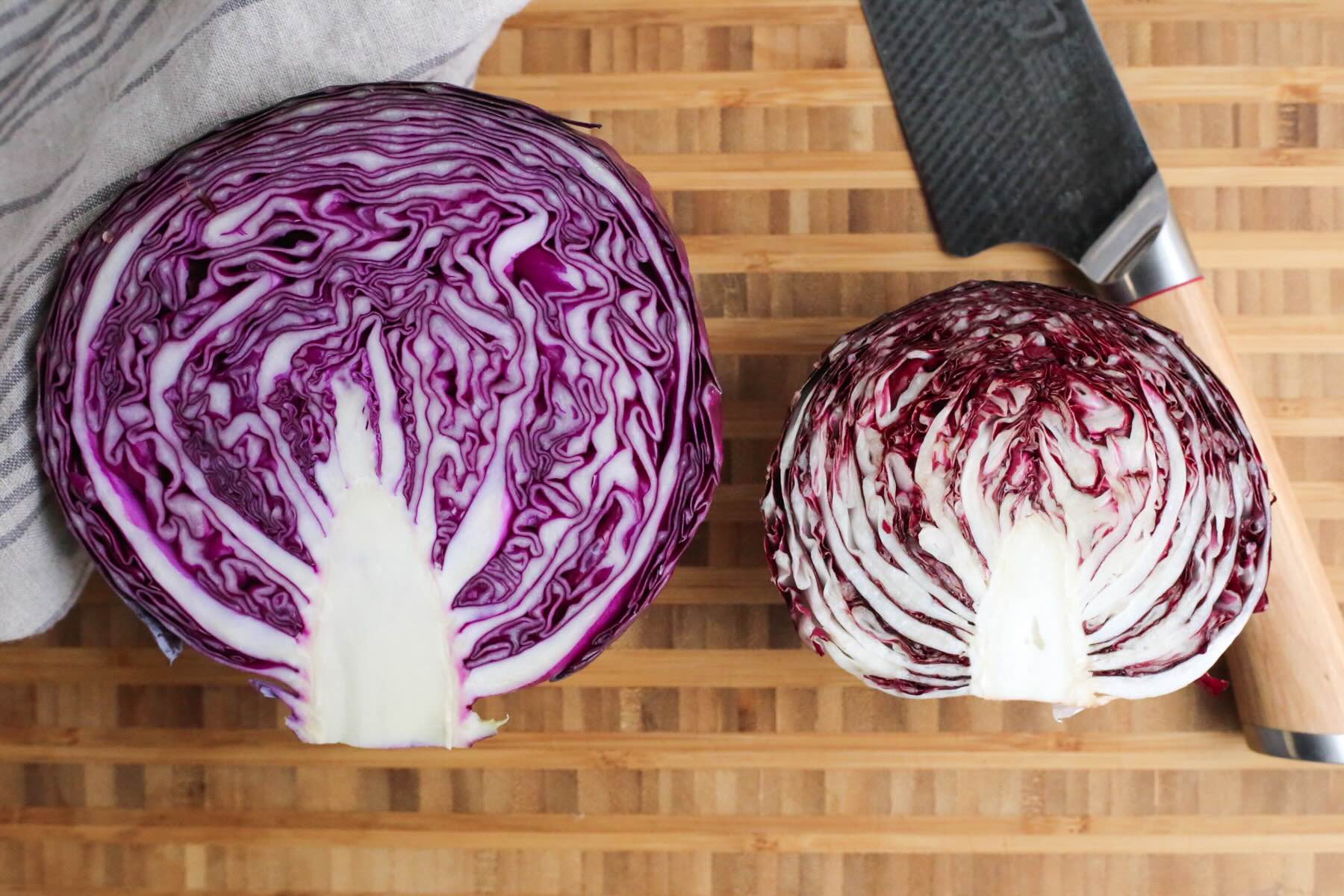
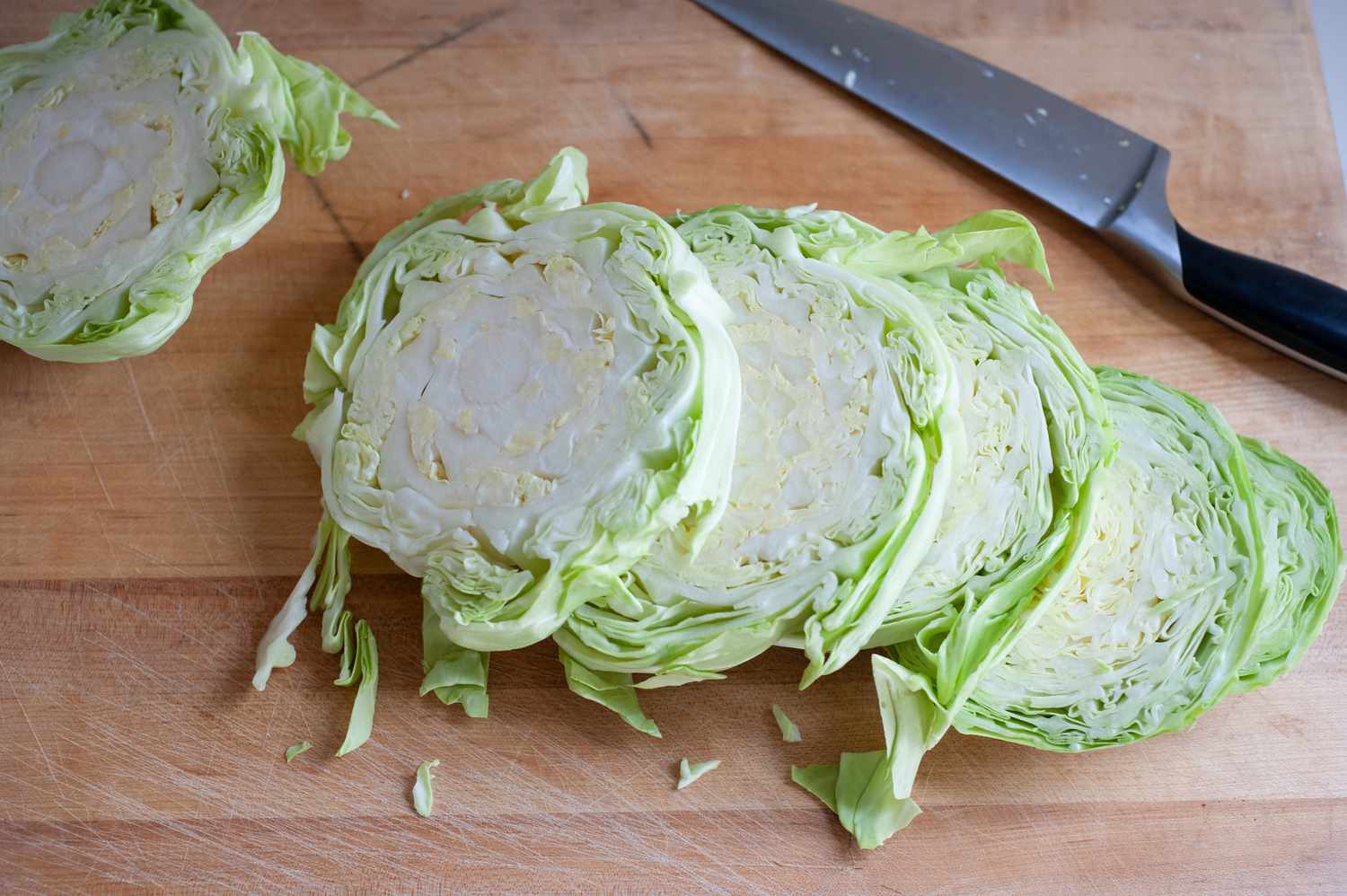

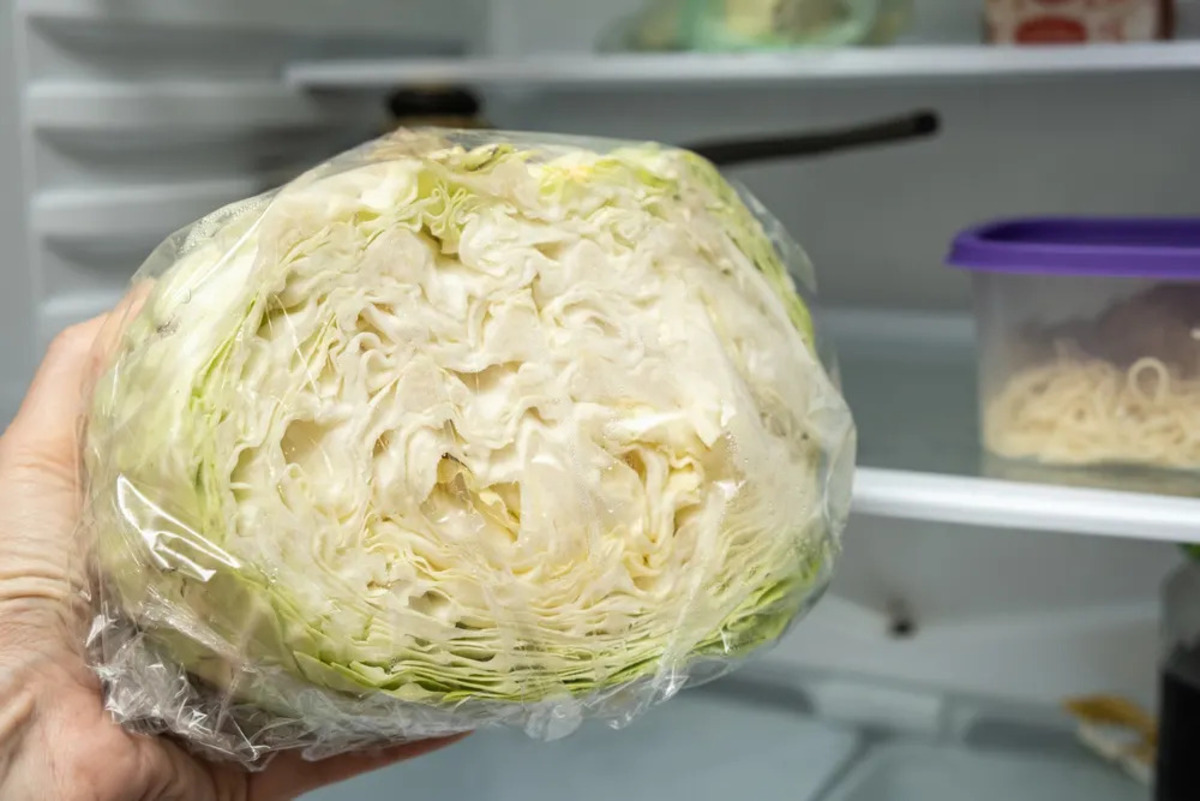
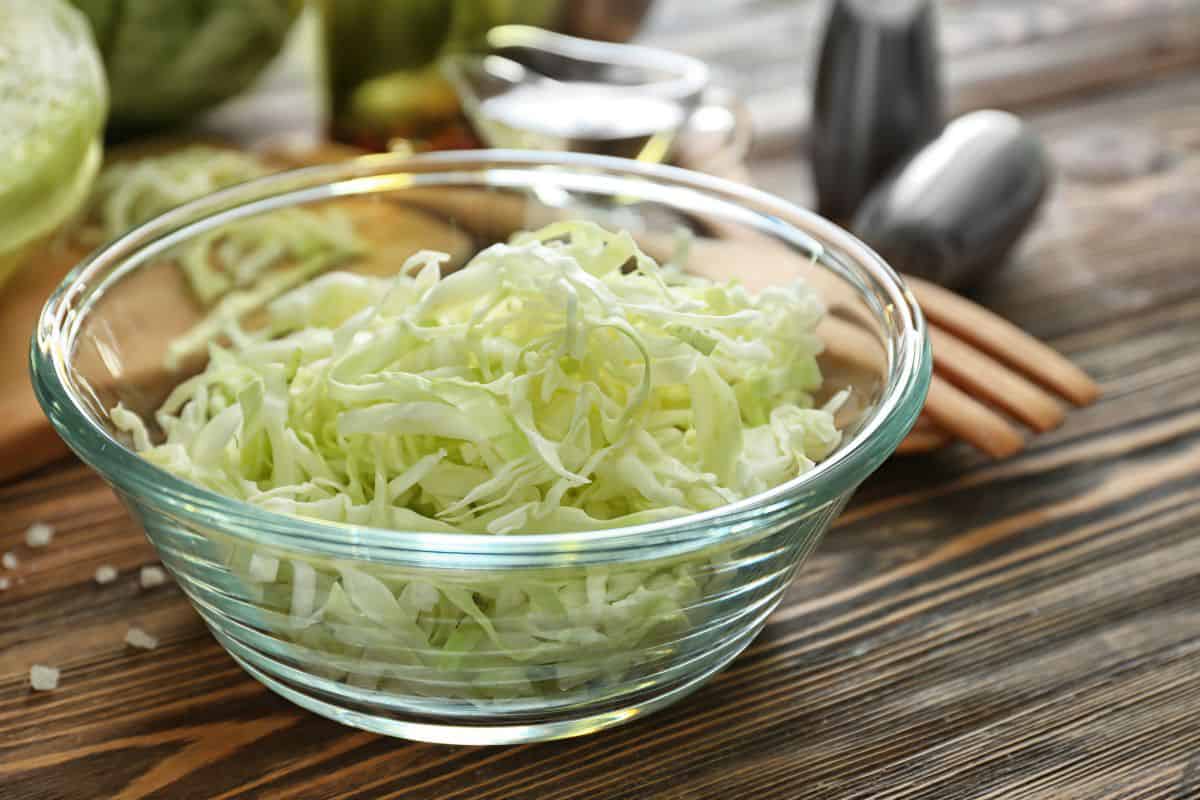
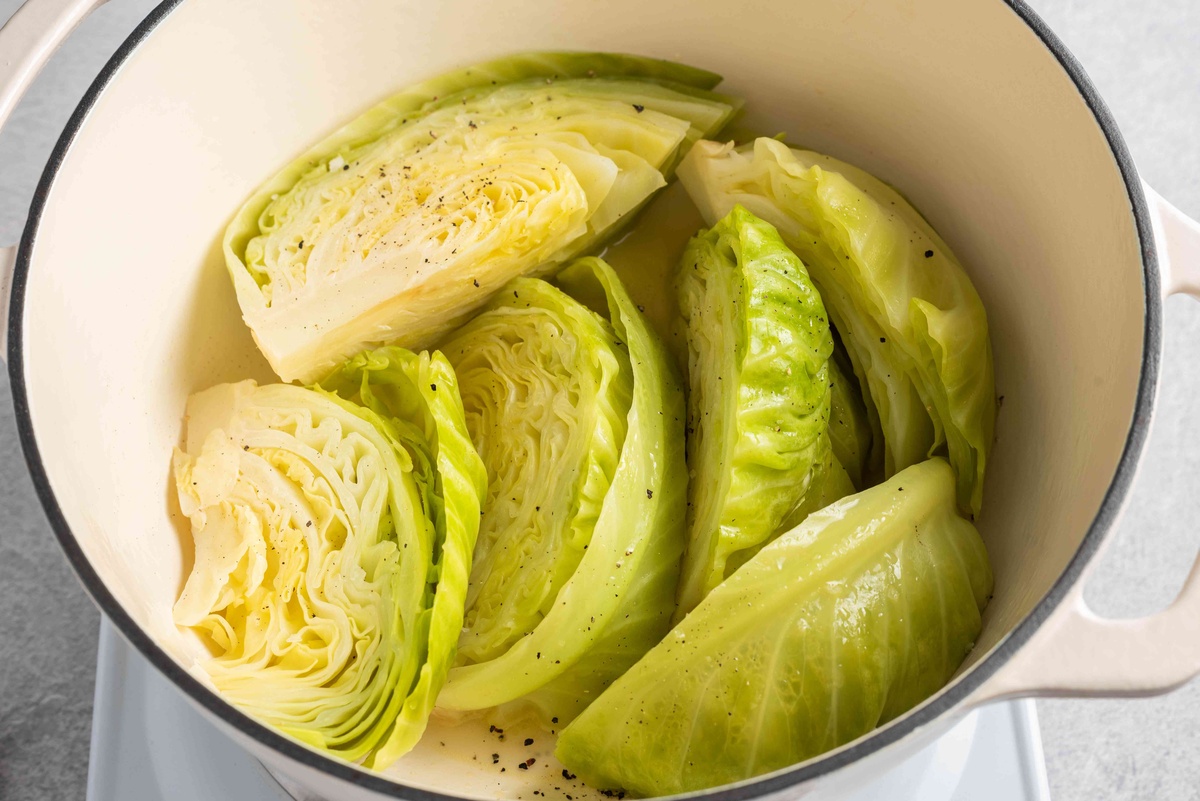

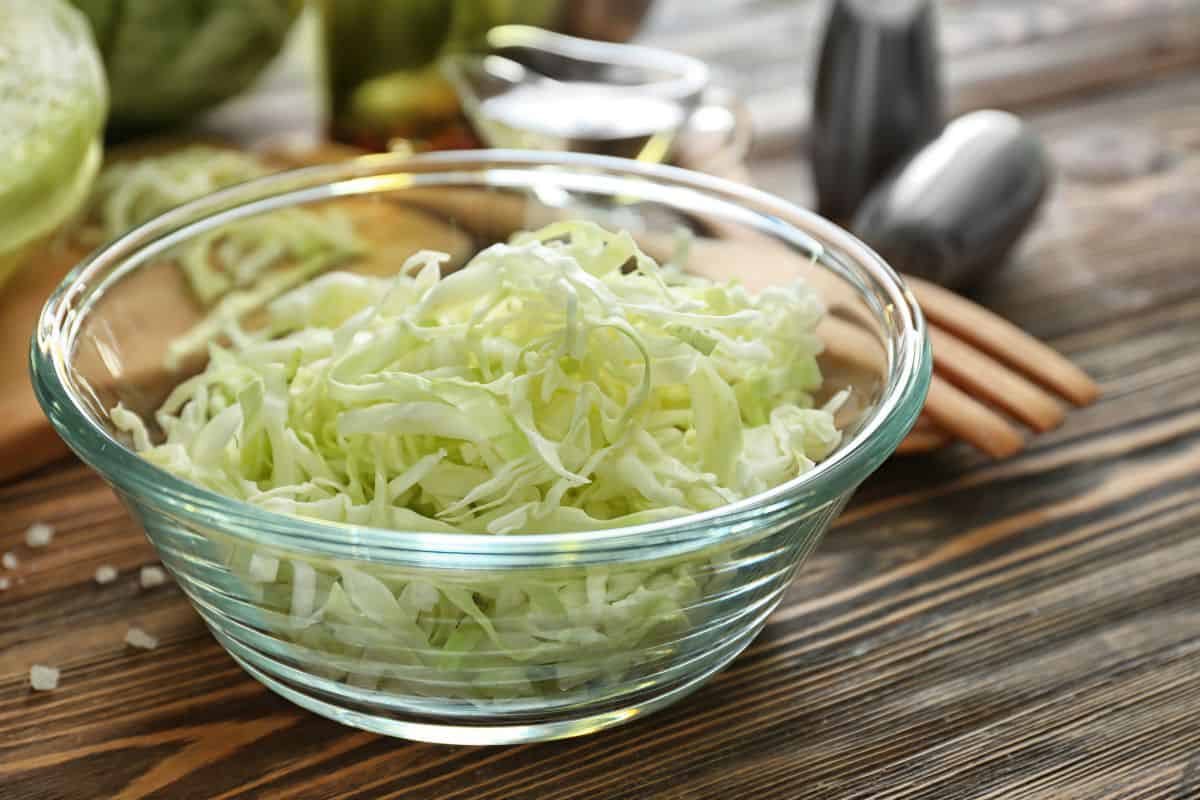
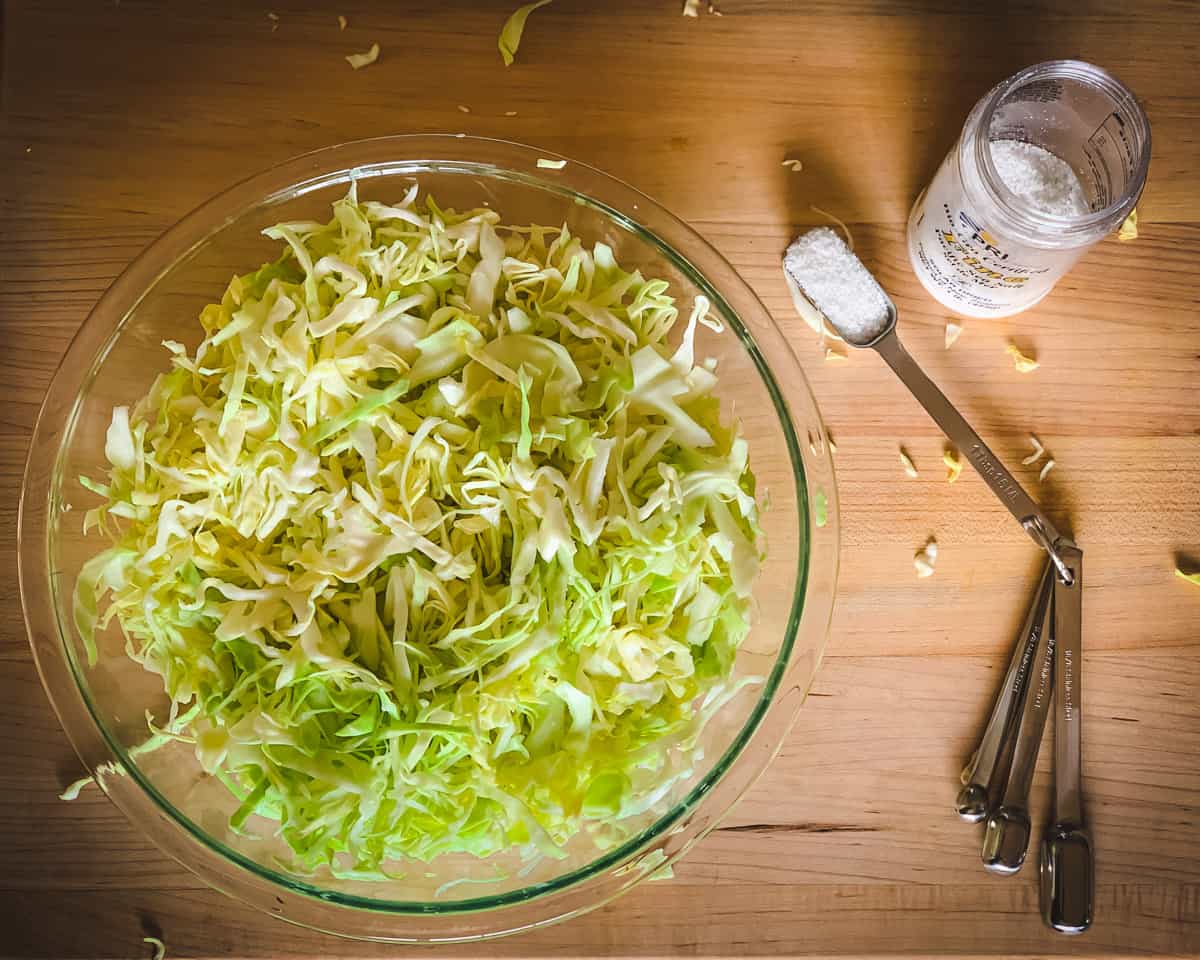
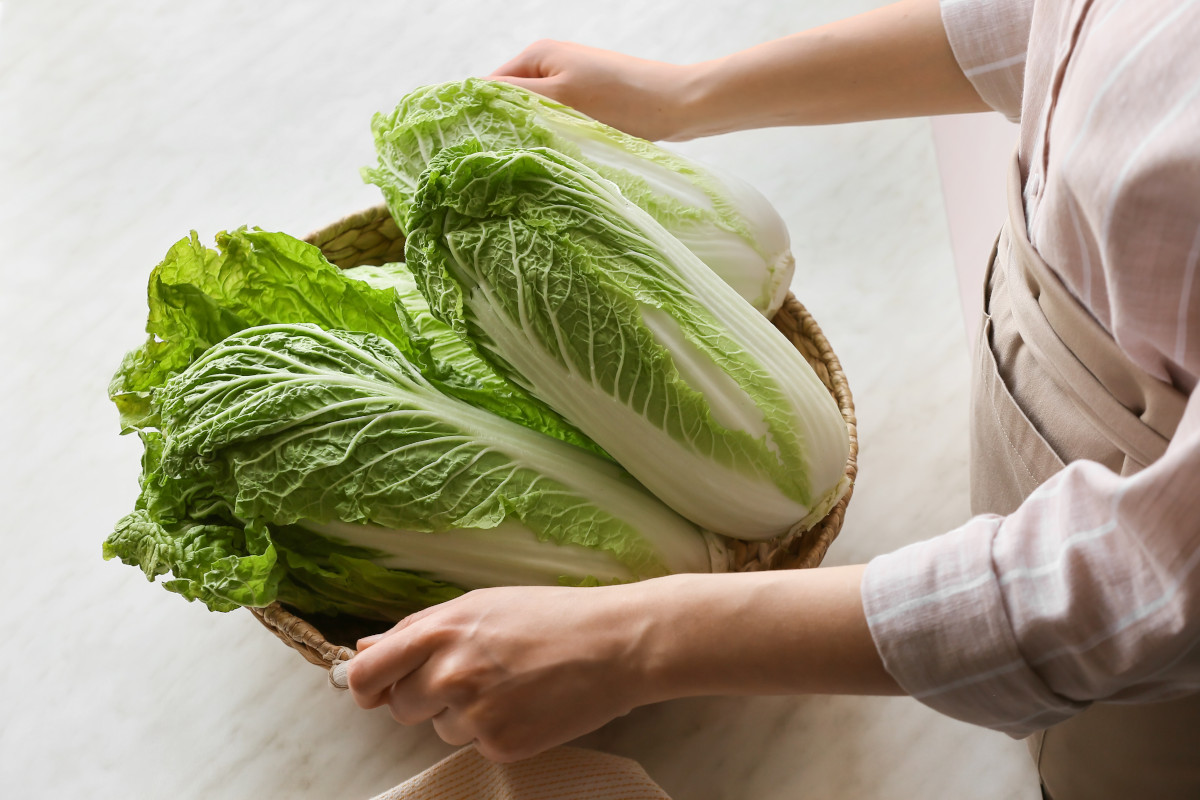
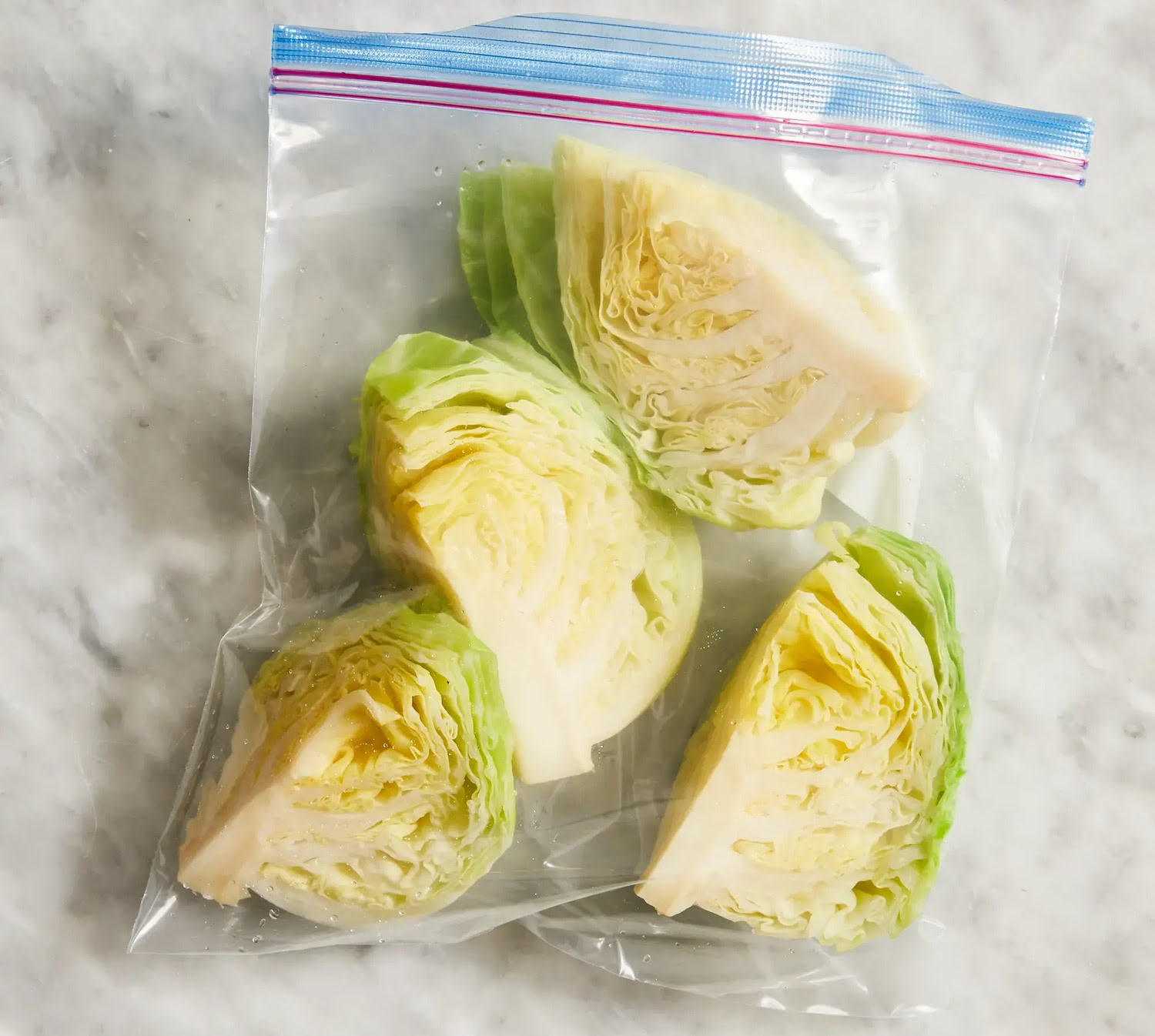
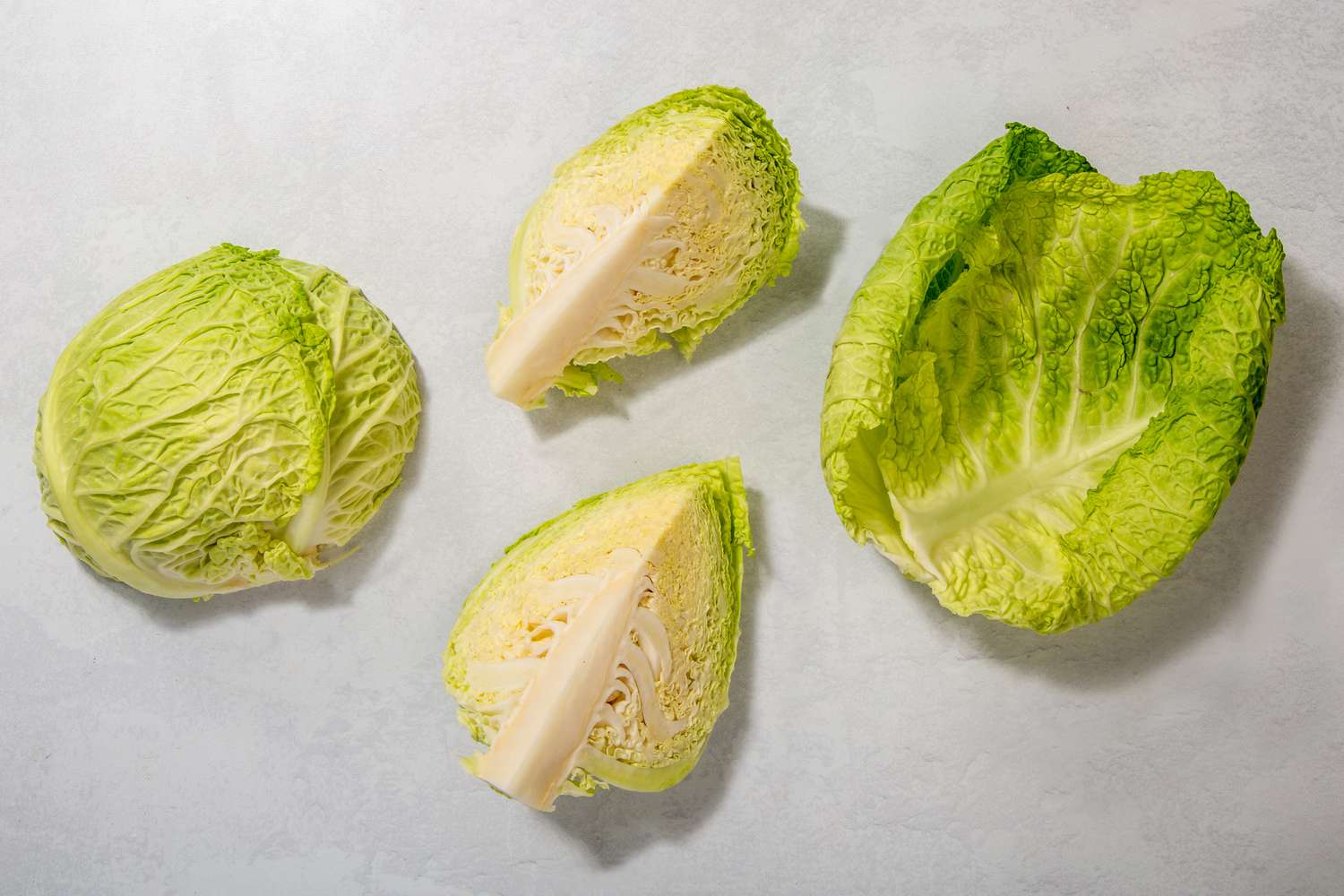
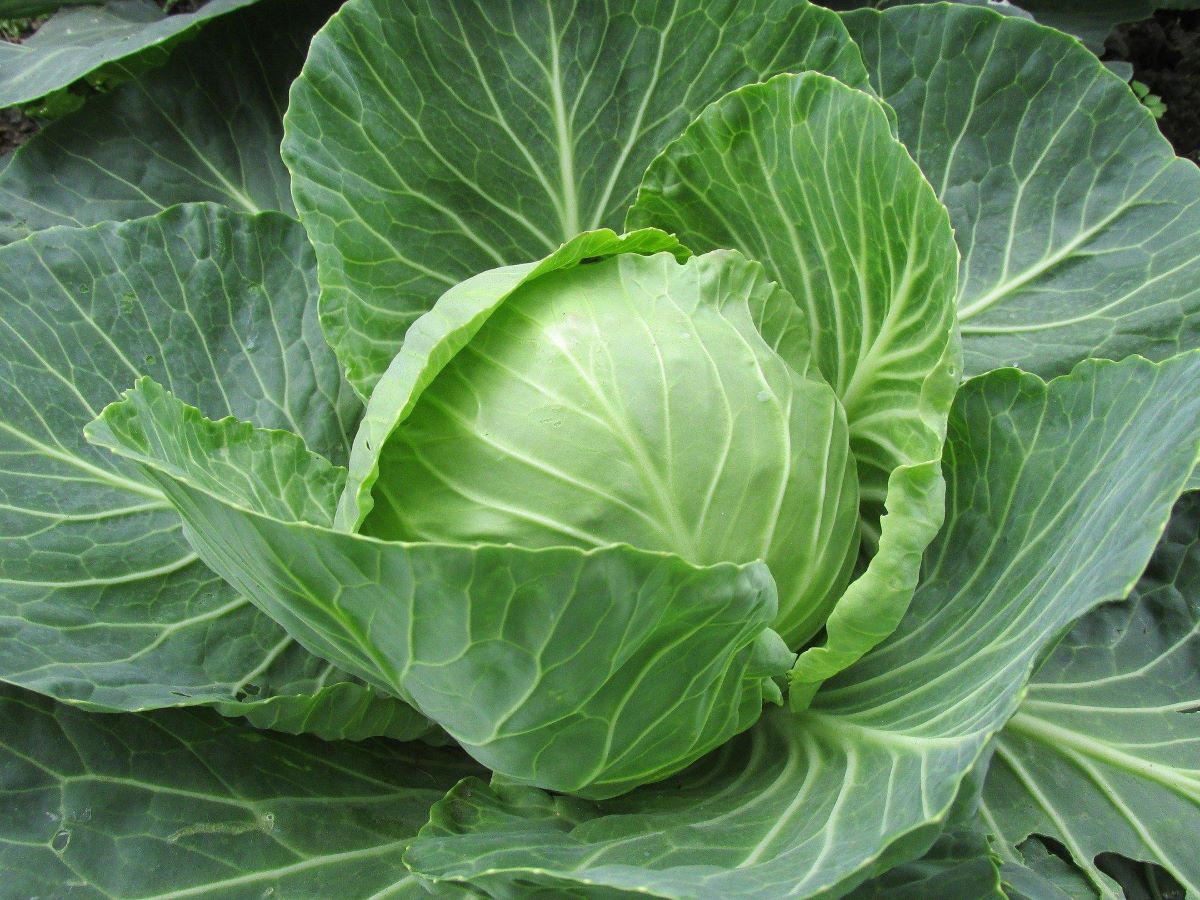

0 thoughts on “How To Store A Head Of Cabbage”